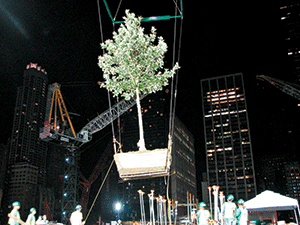 New research uncovers more data about the benefits of trees and green spaces—specifically, how they make people feel younger and healthier. Here’s a look at the study.
New research uncovers more data about the benefits of trees and green spaces—specifically, how they make people feel younger and healthier. Here’s a look at the study.
Problem: Youth is man’s great, unattainable desire. Anti-aging and ways of feeling more youthful seem more attainable, often inspiring TV segments, magazine articles or product lines. But what if, rather than pills, creams or beauty tips, obtaining a youthful feeling was as easy as planting a tree?
In a new study, published in Nature, researchers looked at just that, studying whether living in an area with more trees and green space would actually make people feel younger and healthier.
Methodology: The researchers used Toronto as their testing grounds.
First, they used two data sets from the Geographical Information System: “Street Tree General Data,” which lists the locations of over 530,000 individual trees planted on public land within the city of Toronto, and “Forest and Land Cover,” which contained detailed areal information of tree canopies in Toronto. The study only used trees on public land that lines the street, so trees in public parks were excluded.
Then, information about individuals’ health and demographics was obtained in the context of the Ontario Health Study, an ongoing research study of adults living in the Canadian province of Ontario aimed at investigating risk factors associated with diseases like cancer, diabetes, heart disease and more. The researchers used a subset of 31,109 residents from this list.
Finally, the researchers compared the health reports of people in specific areas, considering demographic and other influences, with the amount of trees in that area.
Results: Researchers concluded with the following findings:
“We find that having 10 more trees in a city block, on average, improves health perception in ways comparable to an increase in annual personal income of $10,000 and moving to a neighborhood with $10,000 higher median income or being 7 years younger. We also find that having 11 more trees in a city block, on average, decreases cardio-metabolic conditions in ways comparable to an increase in annual personal income of $20,000 and moving to a neighborhood with $20,000 higher median income or being 1.4 years younger.”
Implications: This is not the first study to show that green spaces can have health benefits. In a study published in “Mental Health and Function – A Literature Review” found that exposure to green spaces can have mental health benefits, including reducing the symptoms of ADD in children, childhood development and alleviation of symptoms from illnesses like Alzheimer’s, dementia and depression. Separately, Penn Medicine released a study that found “residents who walked near newly greened vacant lots had significantly lower heart rates compared to walking near a blighted, or neglected, vacant lot.”
These findings support calls for beautification in cities across America from initiatives like Project EverGreen, Million Trees NYC, American Forests’ Global ReLeaf and other urban forest initiatives.
Photo: Environmental Design

